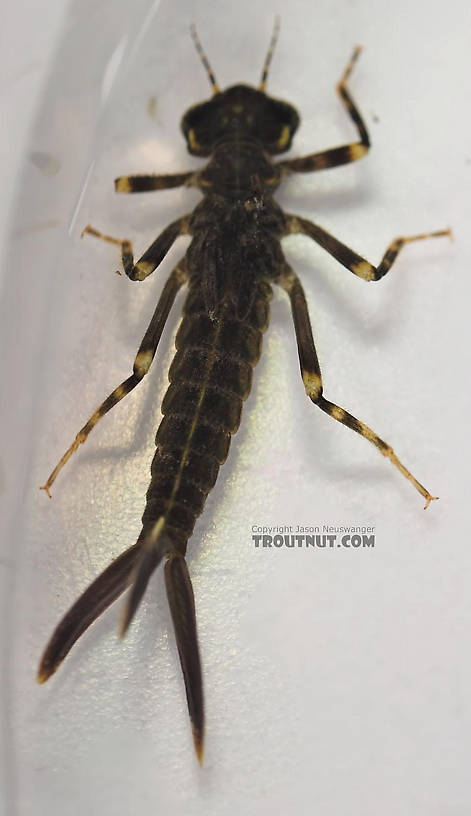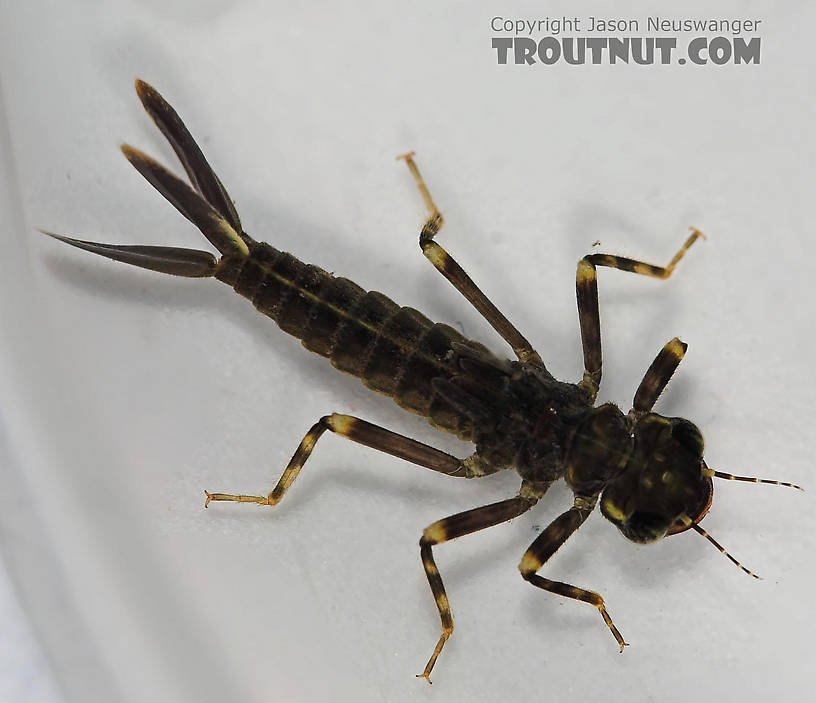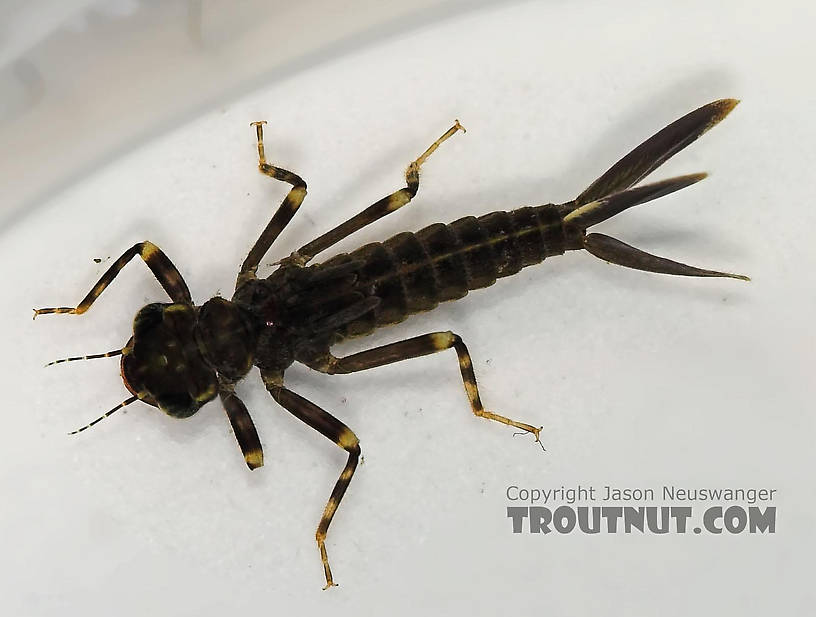Blog & Latest Updates
Fly Fishing Articles
Insects by Common Name


Argia Damselfly Nymph Pictures
Classification
Kingdom
Animalia (Animals)
» Phylum
Arthropoda (Arthropods)
» Class
Insecta (Insects)
» Order
Odonata-Zygoptera (Damselflies)
» Family
Coenagrionidae
» Genus
Argia
My friend Willy captured this early instar (Instar: Many invertebrates molt through dozens of progressively larger and better-developed stages as they grow. Each of these stages is known as an instar. Hard-bodied nymphs typically molt through more instars than soft-bodied larvae.) damselfly nymph and brought it to me for identification. It is more robust and stocky at this early stage than the spindly appearance of the later instars (Instar: Many invertebrates molt through dozens of progressively larger and better-developed stages as they grow. Each of these stages is known as an instar. Hard-bodied nymphs typically molt through more instars than soft-bodied larvae.), and its appearance is less familiar.
This damselfly was collected from Fall Creek on August 28th, 2005 and added to Troutnut.com on April 14th, 2006.
Recent Discussions of this Nymph
What size are damselflies? 1 Reply »
Whenever I go up to the Adirondacks in midsummer to fish, I always observe alot of damselflies aroundand know the trout take them, at least occasionally, because I've watched them do it. I was wondering what size the nymphs were and if a black stone fly pattern of correct size might imitate the nymph well enough.
Thanks!!
Adirman
Replyirradecant blue damselflyThanks!!
Adirman
Posted by Mwmeci on Jul 3, 2008
The trout in Wisconsin on July 3, 2008 were eating the fly's as they emerged. Gosh they make a ruckus as they took to the air. They only emerged under a very low bridge, not upstream or downstream from the bridge. I've never witnessed this before.
ReplyArgia charactersPosted by DMM on Nov 26, 2006
One reason I think it's Argia, is that this genus is characteristically "stubby" and "robust" through the last instar. Without verification, I think it is the stubbiest of the Zygoptera.
ReplyGenus IDPosted by DMM on Nov 19, 2006
May be Argia, detailed pictures of the prementum are always good for the ID of Odonata. Odonata can be tricky in general though, so the more details the better.
ReplyStart a Discussion of this Nymph:
Top 10 Fly Hatches
Top Gift Shop Designs
Eat mayflies.
Top Insect Specimens
Miscellaneous Sites
Troutnut.com is copyright © 2004-2024 Jason
Neuswanger (email Jason). See my FAQ for information about use of my images.
 privacy policy
privacy policy



